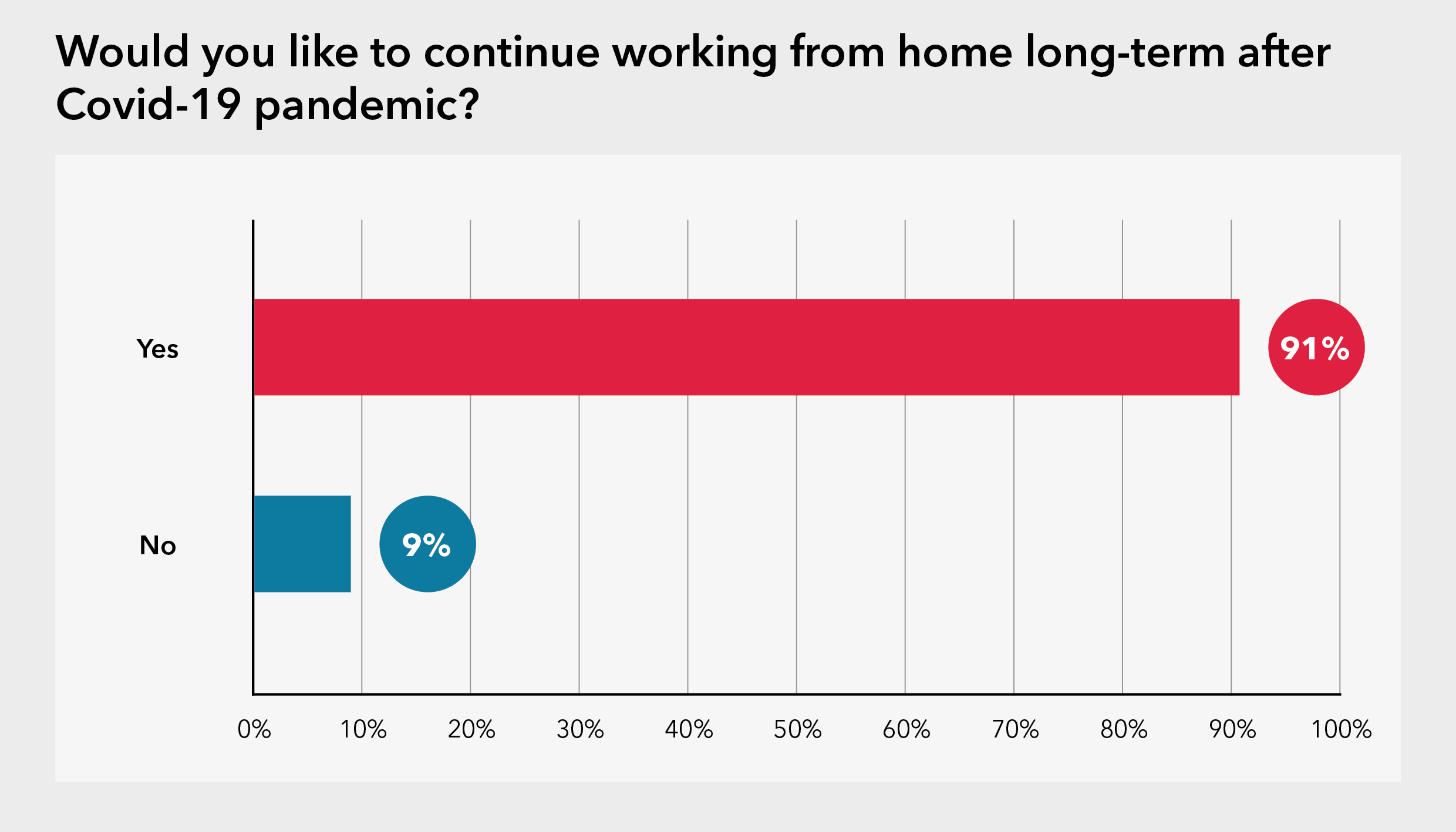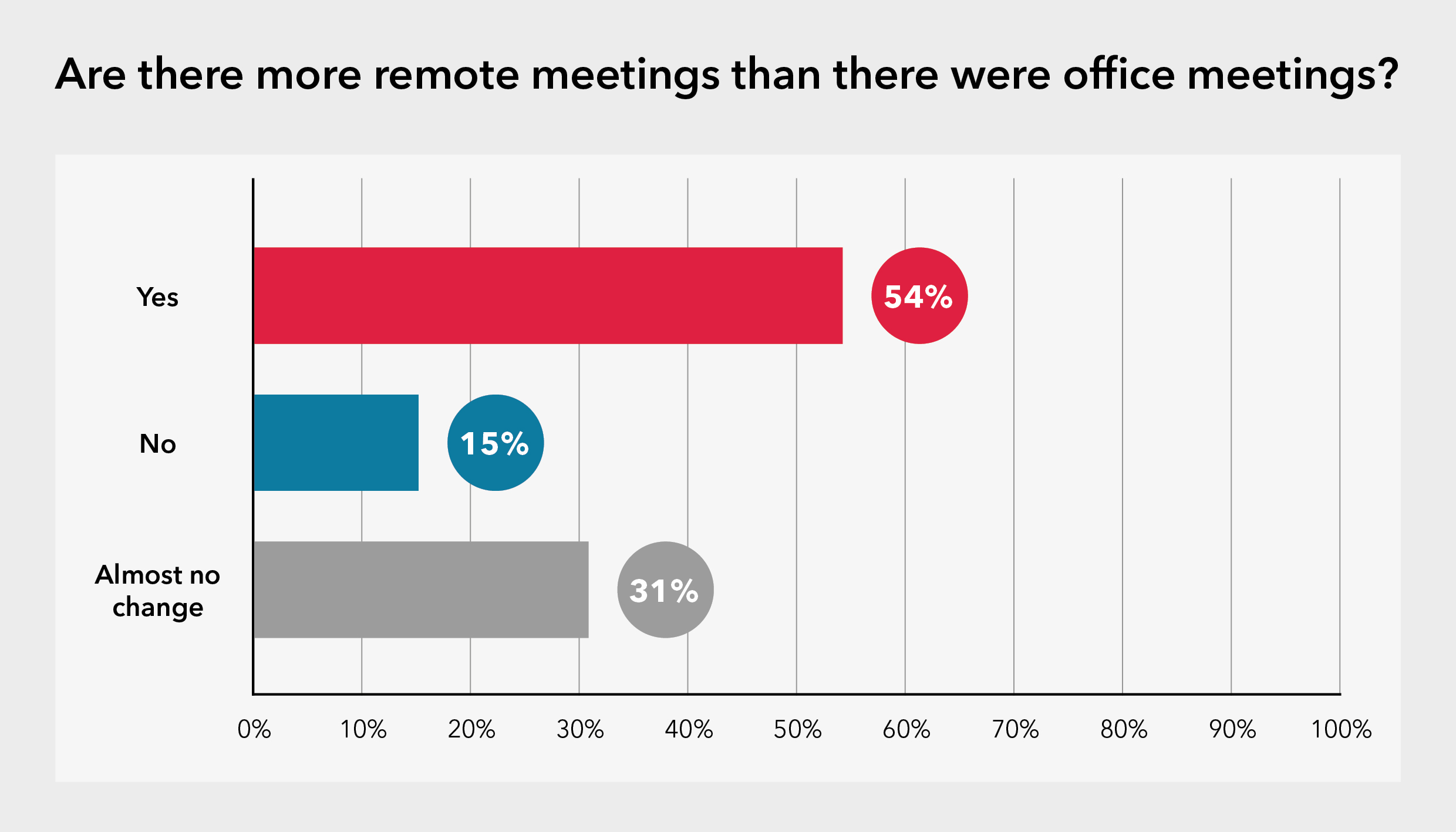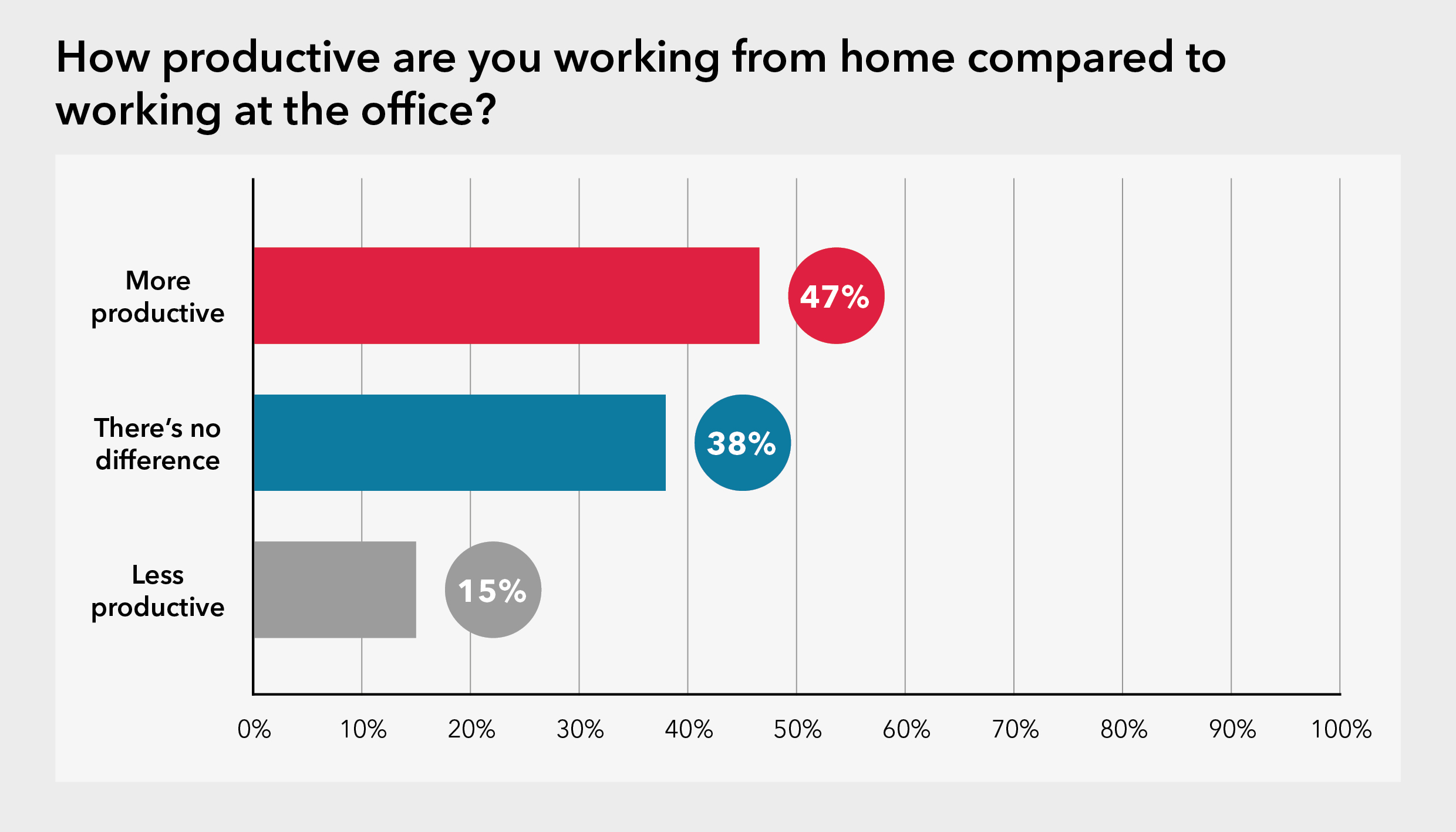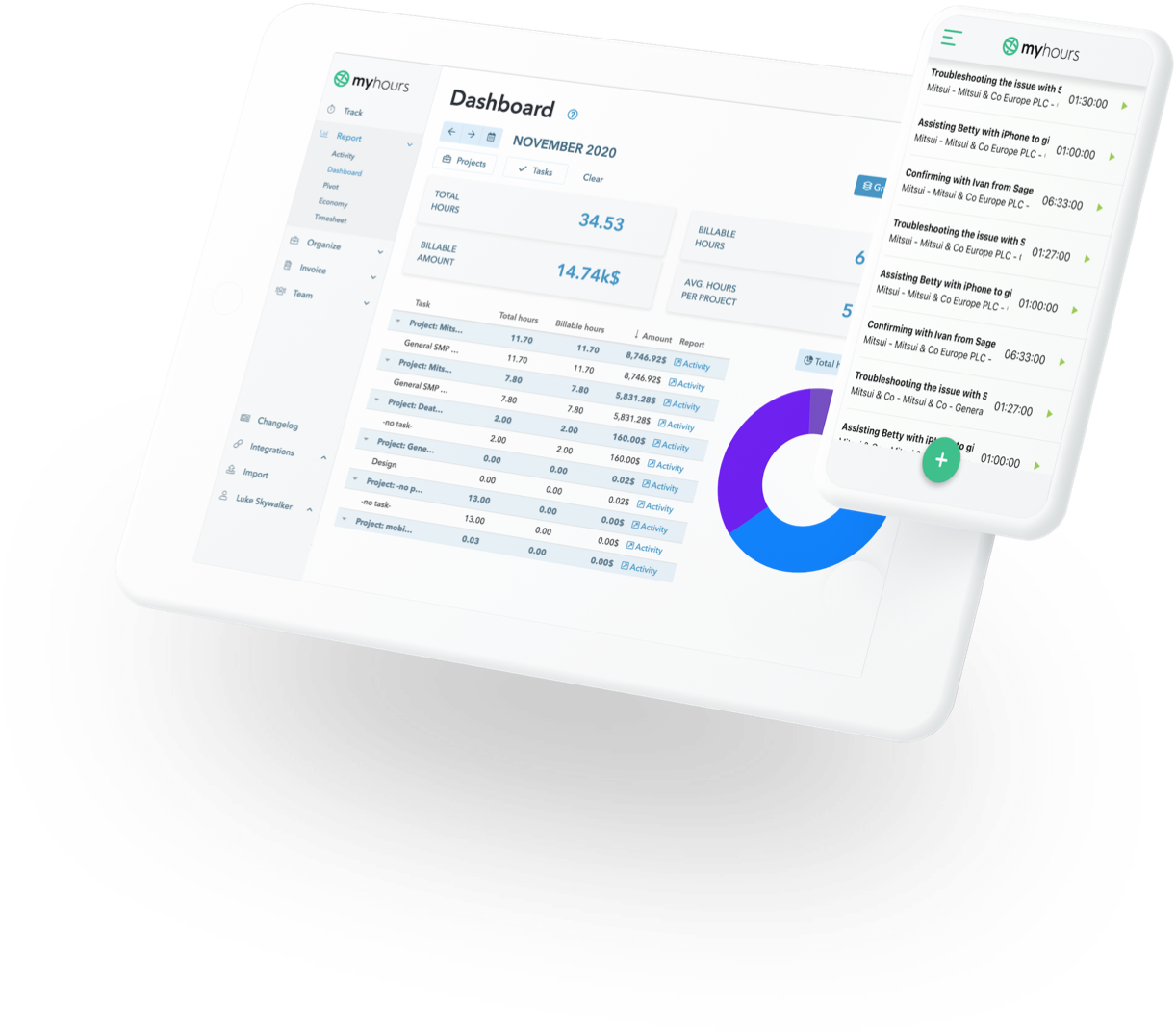Remote work study: Our findings and tips


We’ve decided to conduct an internal survey after several months of remote work to see what our 100+ employees had to say about working from home.
Like most other companies during the COVID-19 pandemic, Spica was forced to suddenly shift from office to remote work, and so the majority of employees have been doing their work from home. While some were doing so before the pandemic, implementing this approach company-wide was definitely challenging and an interesting experience.
- The seven main findings from our work from home study
- 1. Find processes that fit remote work
- 2. The need to clearly separate work and private life
- 3. Increase the efficiency, not the frequency, of meetings
- 4. Break weekly objectives into smaller tasks
- 5. Remote work can be more productive
- 6. Feeling isolated is an issue that shouldn’t be overlooked
- 7. The reasons our employees enjoy working from home
The bottom line: unsurprisingly, 91% of our employees would like to continue working from home after the pandemic - most of them for two or three days per week. However, they would also like to improve some areas of remote work.
If you’re interested in first-hand findings, insights and tips from some of our more experienced remote workers, you are kindly invited to read on.

The seven main findings from our work from home study
1. Find processes that fit remote work
More than two-thirds of our employees think that work processes (e.g., meeting frequency and technological tools) need to be better adapted to flexible forms of work.
This result was as expected, as the sudden change didn’t allow us to provide most of our employees with powerful laptops, VPN connections, and other tools needed for efficient remote work. To be efficient at remote work, the technology you’re using must work and the right processes must be in place.
As there will be more and more remote work, we’ve decided to create a set of rules and guidelines, where we’ll clearly state the processes our company uses and our expectations when it comes to working from home. This proved very beneficial during the transition and it’s also useful for new employees.
2. The need to clearly separate work and private life
One of the bigger challenges our employees faced was separating their work and private life. 66% of respondents said they would like to set clearer boundaries between their private and business life.
This shows that flexible working hours can be a double-edged sword if you’re not disciplined and strict. Soon you can find yourself constantly skipping between work and private life, which can easily lead to burnout.
Scheduling your working hours and ensuring your family members don’t disturb you during deep work is of the utmost importance. Here are a few tips that make it easier to unplug once you’re done with work:
- Work only at your workstation and once you’re done for the day “close it” until tomorrow. Don’t use your working desk for anything else if possible.
- Tell your co-workers when you’re done for the day. Letting them know will make it easier to ignore your work email inbox and notifications until tomorrow.
- Decide what time you’ll stop working and start doing something else immediately afterwards. Take a nap, cook lunch or dinner, exercise, play with your kids, - it doesn’t matter what you do, what matters is that you make the mental shift and take your mind off work.
3. Increase the efficiency, not the frequency, of meetings
As is probably also your experience, the frequency of meetings increased for roughly half of our employees, which is significant as meetings can be very time-consuming. 51% of our employees think that the meetings remained as productive as in the office and 33% saw the meetings as more productive, which is something to build upon.

Employees noticed room for improvement and think the meetings would be even better if:
- the agenda was sent to the participants before the meeting (66%),
- they were recorded (46%),
- there weren’t several tasks being performed simultaneously during the meeting (64%).
65% of employees think they do not need more communication with management.
It seems that we implemented enough virtual meetings in our working process. The next step is to strive towards maximum efficiency where all the participants are prepared, the agenda is clear, and everyone stays on point. That should lead to fewer meetings without compromising clarity.
Read more: How to run a meeting – the 8 best tips to excel at organizing meetings
4. Break weekly objectives into smaller tasks
Speaking of clarity - 44% of employees would like to see clearer instructions and expectations being expressed by management. Although the sudden change because of Covid made things tough, we should still strive to achieve clear communication. Being clear can be especially challenging for middle management as they need to lead their team and answer to upper management.
That’s why it’s better to over-communicate, especially in the beginning. Focus on written communication, include everyone involved, and explain things that might seem obvious.
That doesn’t mean you have to write long emails, but rather aim to communicate everything in a direct, succinct way. Get feedback from your team and managers and learn how much information they need to work smoothly.
We also asked our employees if “an encouraging way of controlling co-workers at work” should be introduced. 47% disagreed with it, 22% mostly disagreed and 20% would like this kind of control.
What we think works best is updates via short calls where you can see how everyone is doing, and time tracking, which can be used to detect potential problems and improve workflows and work processes if you notice certain tasks are taking longer than they should.
We also asked our employees how their manager should support their efforts:
- 66% of respondents believe that a leader must clearly define the tasks and goals of their team and pinpoint the individual’s contribution.
- 64% believe that management should clearly and regularly communicate business results and strategy.
- 71% of respondents agreed that greater autonomy is welcome and allows more self-initiative and decision-making.
- 81% of employees believe that a leader must understand that trusting them is more important than ever when working from home.
Basically, it’s best to set weekly objectives and then break them into small tasks. This makes it clear what certain employees have to do and reduces the risk of significant failure as they are working small task by small task. This also means you can present the bigger picture to your team without overwhelming them as it’s divided into smaller parts. At the same time, smaller tasks enable managers to empower their employees and trust them to complete a project step-by-step.
If you encourage your employees to keep a journal of what went wrong and what worked well, you can improve your remote working process every month or so and continuously improve your efficiency.
5. Remote work can be more productive
When assessing their own productivity when working from home, 46% of employees believe that they are more productive when they work from home, 39% believe that there is no difference in productivity, and 15% estimate they are not as productive. As remote workers often tend to struggle with productivity, this result was a bit surprising but definitely encouraging.
The key to remote productivity is scheduling chunks of time for deep work where you avoid distractions at all costs. That’s when you can usually get most of your work done in a few hours.

6. Feeling isolated is an issue that shouldn’t be overlooked
Another challenge a lot of remote workers face is loneliness or a lack of socializing with their colleagues.
- 17% of our employees definitely see this as the biggest con of remote work and an additional 42% of our employees somewhat agree with this statement.
- 30% of our employees felt isolated or lonely, at least to some extent, which is worrying as the global numbers are usually closer to 20%. Of course, we are in an unusual situation where even people that otherwise wouldn’t want to work from home simply have to.
- 41% think that face-to-face calls before meetings can help resolve this issue. If we push this idea a bit further, we could also organize after-work online hangouts on Friday or have group activities (e.g., morning yoga) via webcam for those interested. An official Slack channel for non-business related discussions can help as well.
7. The reasons our employees enjoy working from home
When we asked our employees what they like best about working from home, the answers were mostly related to “not driving to work”. They enjoyed saving the time, money and "nerves" they otherwise lose in traffic jams.
A calmer environment where it’s easier to focus and be productive was another common reason. Some of our employees also said that scheduling flexibility helped them with their work-life balance.
The Covid-19 pandemic certainly showed a lot of people and companies that remote work is feasible and that the business won’t collapse if you allow your employees to work from home a bit more often. On the contrary, in fact you can see it as an opportunity to streamline your work processes and improve communication amongst colleagues and managers.
We hope our work from home study and accompanying tips have given you a few ideas that’ll help you face remote challenges and turn remote work into an asset for your business.







